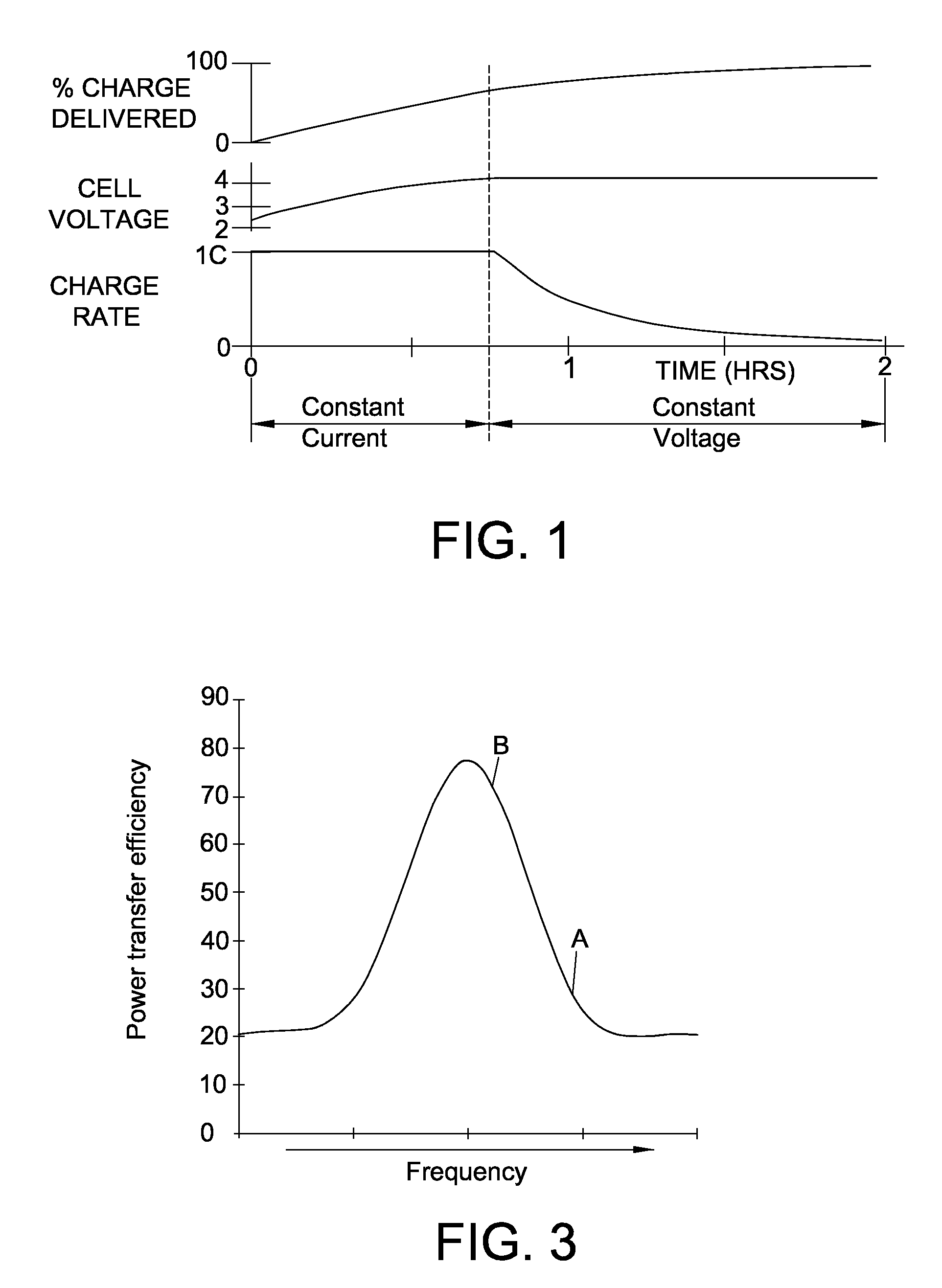System and method for inductively charging a battery
a battery and inductive charging technology, applied in the field of system and method for inductive charging of batteries, can solve the problems of not all batteries are easily charged inductively, li-ion batteries are unable to absorb an overcharge, and li-ion batteries are not as straightforward as other batteries, so as to achieve the effect of increasing current through the primary coil
- Summary
- Abstract
- Description
- Claims
- Application Information
AI Technical Summary
Benefits of technology
Problems solved by technology
Method used
Image
Examples
Embodiment Construction
[0033]An inductive charging system in accordance with an embodiment of the present invention in shown in FIG. 2. The inductive charging system 4 is configured to inductively charge a battery having a nonlinear charging profile, such as a Li-Ion battery. The system 4 generally includes a charger circuit 6 and secondary circuit 8. The charger circuit 6 generally includes a primary coil 15, a frequency controller 80 for applying power to the primary coil at a desired frequency and a feedback detector 82 for receiving feedback from the secondary circuit 8. The secondary circuit 8 generally includes a secondary coil 30 for receiving inductive power from the charger circuit 6 and a feedback mechanism 84 for providing feedback to the charger circuit 6 indicative of the voltage or current in the secondary circuit 8. The frequency controller 80 varies the frequency of the power applied to the primary coil 15 as a function of the feedback from the secondary circuit 8. Although described in co...
PUM
 Login to View More
Login to View More Abstract
Description
Claims
Application Information
 Login to View More
Login to View More - R&D
- Intellectual Property
- Life Sciences
- Materials
- Tech Scout
- Unparalleled Data Quality
- Higher Quality Content
- 60% Fewer Hallucinations
Browse by: Latest US Patents, China's latest patents, Technical Efficacy Thesaurus, Application Domain, Technology Topic, Popular Technical Reports.
© 2025 PatSnap. All rights reserved.Legal|Privacy policy|Modern Slavery Act Transparency Statement|Sitemap|About US| Contact US: help@patsnap.com



